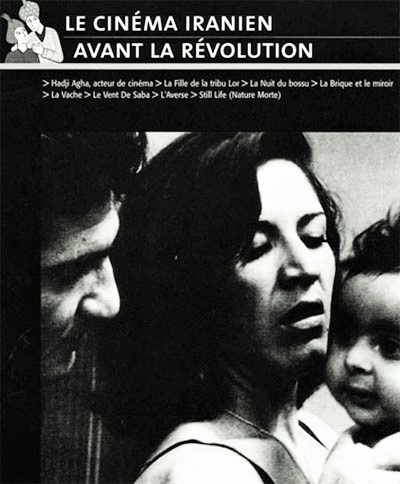Introduction:
In the realm of world cinema, certain films transcend the boundaries of time, leaving an indelible mark on the artistic landscape. “Brick and Mirror,” a 1965 Iranian film directed by Ebrahim Golestan, stands as an enigmatic masterpiece that delves into the intricacies of human existence. This comprehensive review aims to unravel the layers of this cinematic gem, exploring its thematic richness, stylistic innovations, and the profound impact it has had on the world of cinema.
Section 1: The Context of Iranian Cinema in the 1960s
1.1 A Pivotal Era: The 1960s in Iranian Cinema
“Brick and Mirror” emerges from a pivotal period in Iranian cinema during the 1960s, often referred to as the Iranian New Wave. This era witnessed a departure from conventional storytelling, embracing a more introspective and socially conscious approach. Against this backdrop, Golestan’s film would become a beacon of innovation, challenging traditional cinematic norms and providing a unique perspective on the human condition.
1.2 Golestan’s Contribution to Iranian Cinema
Ebrahim Golestan, a multifaceted artist known for his contributions to literature, filmmaking, and journalism, played a crucial role in shaping the landscape of Iranian cinema. “Brick and Mirror” is a testament to his visionary storytelling, with its narrative complexity and thematic depth setting the stage for a new wave of Iranian filmmakers exploring existentialism and societal introspection.
Section 2: The Essence of “Brick and Mirror”
2.1 The Puzzling Narrative: A Journey into Existential Angst
“Brick and Mirror” weaves a complex narrative that delves into the existential angst of its characters. The film follows a bricklayer who discovers an abandoned infant on his doorstep, unraveling a sequence of events that explores identity, morality, and the consequences of societal choices. Golestan’s storytelling is a labyrinthine journey, inviting viewers to contemplate the enigmatic nature of human existence.
2.2 Symbolism and Allegory: Unveiling Hidden Layers
The film employs rich symbolism and allegory to convey its narrative, inviting viewers to engage in a process of interpretation. The brick and mirror themselves become potent symbols, representing the construction and reflection of identity. Golestan’s use of metaphorical elements adds layers of complexity to the narrative, encouraging audiences to peel back the surface and explore the hidden depths.
Section 3: The Cinematic Language of “Brick and Mirror”
3.1 Visual Poetry: Golestan’s Aesthetic Vision
“Brick and Mirror” stands as a testament to Golestan’s mastery of visual storytelling. The film is a visual poem, with each frame meticulously composed to evoke a range of emotions. Golestan’s use of cinematography, lighting, and composition creates a hauntingly beautiful atmosphere that complements the existential themes explored in the narrative.
3.2 Innovations in Iranian Cinematography
Golestan’s film is recognized for its innovations in Iranian cinematography. The use of long takes, minimalistic sets, and evocative lighting techniques became hallmarks of the Iranian New Wave. “Brick and Mirror” not only reflects the influence of international cinematic movements but also establishes Iranian cinema as a force to be reckoned with on the global stage.
Section 4: Character Exploration and Performances
4.1 The Bricklayer’s Odyssey: A Quest for Identity
At the heart of “Brick and Mirror” is the enigmatic figure of the bricklayer, whose journey becomes a metaphorical odyssey for self-discovery. The character’s quest for identity and meaning in a seemingly indifferent world resonates with audiences on a universal level. Golestan’s exploration of the human psyche through the bricklayer’s experiences elevates the film to a profound exploration of existential themes.
4.2 Minimalism and Subtlety in Performances
The performances in “Brick and Mirror” are characterized by a subtle and nuanced minimalism. The actors convey a range of emotions through restrained expressions, allowing the audience to project their own interpretations onto the characters. This minimalist approach adds to the film’s enigmatic quality, fostering a deeper connection between the characters and the viewer.
Section 5: Societal Reflections and Critique
5.1 The Mirror of Society: Golestan’s Social Commentary
Beyond its exploration of individual identity, “Brick and Mirror” serves as a mirror reflecting the societal and political context of its time. Golestan subtly critiques the socio-political landscape of 1960s Iran, touching upon themes of alienation, authoritarianism, and the search for meaning within a changing society. The film’s societal reflections contribute to its enduring relevance and resonance.
5.2 Controversies and Reception: Navigating Censorship
“Brick and Mirror” faced challenges with censorship due to its bold exploration of existential and political themes. The film’s depiction of societal disillusionment and its veiled critiques of authority led to controversies, underscoring the power of cinema as a medium for social commentary. Golestan’s resilience in navigating censorship adds another layer of intrigue to the film’s legacy.
Section 6: International Recognition and Legacy
6.1 Cannes Film Festival and Global Acclaim
“Brick and Mirror” garnered international acclaim, particularly at the Cannes Film Festival in 1966. The film’s reception on the global stage marked a turning point for Iranian cinema, introducing audiences to the rich tapestry of narratives emerging from the country. Golestan’s work received praise for its artistic merit and its ability to transcend cultural boundaries.
6.2 Legacy and Influence on Filmmaking
The legacy of “Brick and Mirror” extends beyond its initial release, influencing subsequent generations of filmmakers. Golestan’s innovative storytelling techniques, thematic depth, and contributions to the Iranian New Wave have left an indelible mark on the cinematic landscape. Filmmakers worldwide continue to draw inspiration from the film’s exploration of existentialism and its visual poetry.
Section 7: Conclusion
In conclusion, “Brick and Mirror” stands as a cinematic masterpiece that invites viewers on a profound journey into the depths of human existence. Ebrahim Golestan’s visionary storytelling, coupled with his mastery of visual poetry, elevates the film to a realm of timeless artistry. As an integral part of the Iranian New Wave, “Brick and Mirror” not only reflects the societal nuances of its time but also paves the way for a cinematic legacy that transcends cultural and temporal boundaries. Its enduring relevance and impact serve as a testament to the power of cinema to provoke introspection and spark conversations that echo through the corridors of cinematic history.
